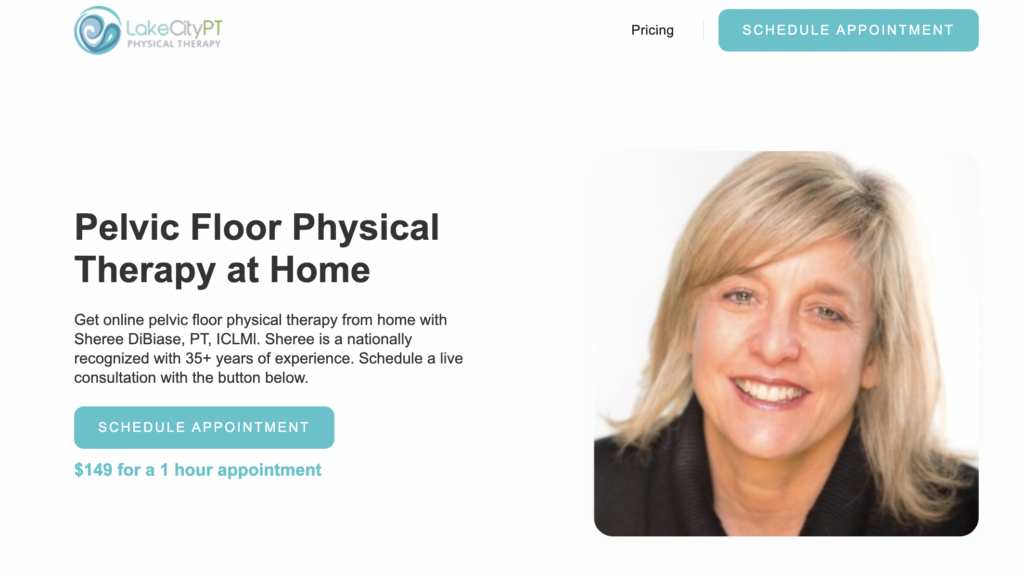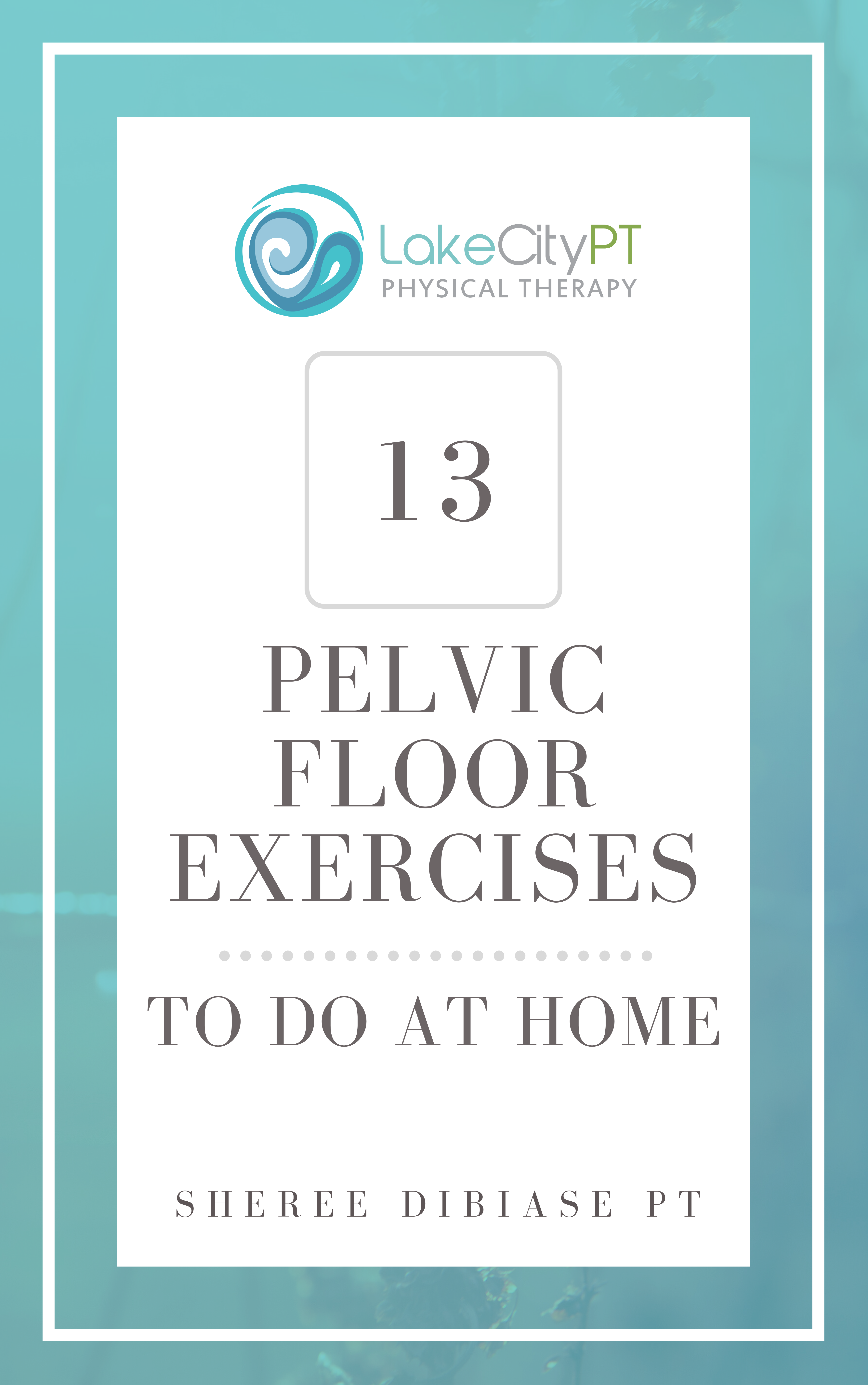Pelvic Pain After Bowel Movement
Pelvic pain can be very uncomfortable and in some cases, chronic. A lot of women experience pelvic pain after a bowel movement. This is referred to as post-defecation or defecation pain syndrome (DPS). The feeling of having to immediately go to the toilet when there’s nothing left in the rectum is known as rectal urgency and is a common cause of pelvic pain.
The feeling of fullness, heaviness, or pressure in the rectum, is also quite common and can lead to feelings of incomplete bowel movement. DPS can be an indicator of pelvic floor dysfunction. In this write-up, we shall discuss pelvic pain after a bowel movement and what you can do to manage it.
Related Articles
Online Pelvic Floor Physical Therapy
Get pelvic floor physical therapy from home. Our online pelvic floor physical therapy can help with incontinence, constipation, painful intercourse and more.
Schedule a live video call consultation with the button below.
Anatomy and Physiology
The pelvis consists of three bones: the left and right hip bones and the sacrum bone which sits between them. The two halves of the pelvis are separated by an open space known as the greater pelvis, below which lies another thin-walled space called the lesser pelvis. The bladder, uterus, and rectum are found in the lesser pelvis while the sigmoid colon is situated in the greater pelvis.
In women who don’t have a history of pelvic surgery, the muscles of the pelvic floor work to support the pelvic organs and maintain continence. These include muscles such as pubococcygeus, iliococcygeus, and levator ani muscles.
Two sets of muscles work to control bowel movements: internal and external sphincter muscles. The internal sphincter is involuntary while the external one can be contracted voluntarily.
The pelvic floor ascending (PFA) muscle is vital in assisting with defecation. It pulls the rectum upwards, making it easier for stool to escape through the anus.
Post-defecation pain syndrome is a condition where a woman experiences pelvic pain after a bowel movement due to an injury or other conditions that affect the muscles and nerves of the pelvis. The pain typically occurs when you have already finished having bowel movements. Rectal urgency can also cause pelvic pain after defecation, but only if the urge to go to the toilet comes immediately after you passed the stool.
Symptoms
When suffering from pelvic pain after a bowel movement, you may experience one or more of the following:
- Pain in the lower abdomen (at or just below the navel)
- Pain in your buttocks
- Pain on one or both sides of the pelvis
- Burning sensation at the anus or vagina
- Bladder or urinary tract infections
Fecal incontinence, bladder dysfunction, and pelvic organ prolapse can also cause post-defecation pain.
Causes and Risk Factors
There are a lot of factors that contribute to the development of post defecation syndrome. A few include:
- An injury or trauma that affects your pelvic floor muscles and nerves
- Nerve damage due to pregnancy, childbirth, menopause, or surgery
- Chronic constipation
- An overactive or spasming pelvic floor muscle
- Rectal urgency due to a disease called ulcerative colitis or hemorrhoids
- Post-operative adhesions
- Pregnancy and childbirth can also cause problems with the muscles and nerves of the pelvis which may lead to post defecation pain.
Post defecation syndrome is not life-threatening. However, it can have a significant impact on your quality of life. It can lead to depression, anxiety, low self-esteem, and embarrassment.
Diagnosis
Post defecation pain syndrome is diagnosed by your doctor after doing a complete pelvic examination. He will ask you about the symptoms you experience and how often they occur. He might also inquire about what happens when you pass stool to check whether there’s rectal urgency involved in your pelvic pain.
There is no specific test used to diagnose post defecation syndrome. However, your doctor can use a few tests including:
- Blood tests – to rule out any underlying blood-related conditions
- Flexible sigmoidoscopy – if you have bowel symptoms such as diarrhea or constipation
- Rectal examination – if you have rectal urgency or a history of anorectal pain
Your doctor will also ask about your medical history to check for other conditions that could cause the symptoms you are experiencing, such as bladder infections or hemorrhoids. He might take a urine sample or perform a small test on one of the rectal walls to determine if an infection is present.
Treatment Options
These treatment options can help you manage your post defecation pain syndrome:
- Lifestyle changes to control constipation and straining during bowel movements
- Medications to treat bladder infections or hemorrhoids
- Physical therapy such as manual pelvic floor muscle training (PFMT) and biofeedback
- Electrical stimulation to relax your pelvic floor muscles
- Pelvic organ prolapse surgery, especially if you have a rectocele or enteroceles.
- Surgery is usually performed under general anesthesia. Your surgeon will make an incision on your abdomen and insert a camera to see the rectum. During surgery, he will also remove any scar tissue or adhesions that are causing your symptoms.
Pelvic floor physical therapy can be a viable option in relieving the discomfort felt in the pelvic region. The therapist will teach you exercises that can strengthen weakened pelvic floor muscles.
The therapist can also prescribe you an electrical stimulation device to use at home. This will help the pelvic floor muscles heal faster. Through vaginal training, you can learn how to control your bladder and bowel function to avoid future occurrences of post defecation pain syndrome.
Since pelvic floor pain can be caused by conditions other than post defecation syndrome, it’s important to seek professional help if you are experiencing discomfort in your pelvic organs. Your doctor will perform the necessary tests to determine the cause of your symptoms and recommend treatment options best suited for you.
Don’t Ignore Your Pelvic Pain
If you are experiencing pelvic pain after defecation, it is important to determine the cause of your symptoms. Pelvic floor physical therapy can help treat the underlying conditions that may be causing this discomfort. Physical therapists have extensive knowledge in diagnosing and treating pelvic floor disorders. They can also teach you exercises that will strengthen your weakened pelvic floor muscles; lessen the pain felt in the pelvic region; and help you achieve better bladder control.



